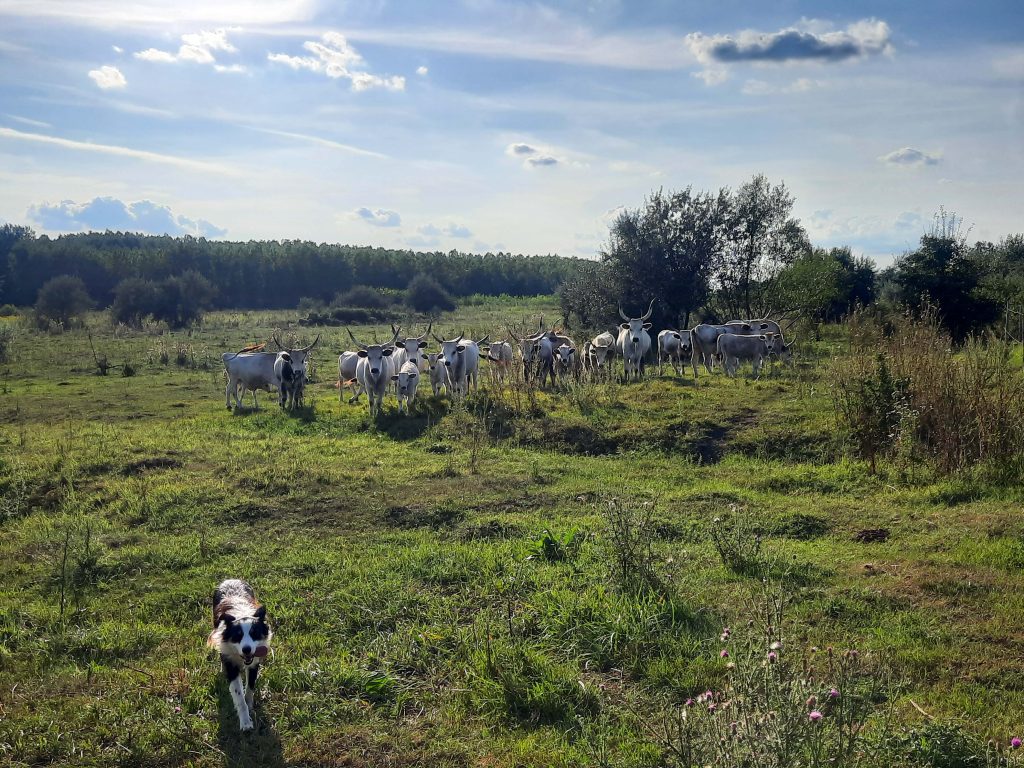A post by Susan de Koning, Gudrun Ruff, Sarah Helena dos Santos Farias and Mara Zinnow

In the countryside of Hungary there is a story of resilience, adaptation and transformation – the story of Csaba Szabó and his farm. His journey began in the turbulent times of the economic crisis starting in 2008, when Csaba and Anett Szabó decided to seek an alternative path. They made the bold decision to buy a small farm and embarked on a journey that changed the course of their lives.
After creating their own vegetable garden, they ventured into sheep farming, grazing the lands within the Tápio-Hajta National Park. However, the conditions inside the park, primarily wet grasslands and reed vegetation, were not ideal for sheep. Fascinated by traditional breeds, they decided to trade fifteen sheep for one Hungarian Grey cow. Native to the region, the Hungarian Grey (Fig. 1) is extraordinarily adapted to the harsh National Park environment. As is the case with many traditional breeds of cattle, Hungarian Grey have remarkable versatility in their diet, consuming a wide range of foods, thereby contributing to biodiversity, dispersal of desirable plant species and the suppression of undesirable species (Török et al., 2014).
Apart from contributing to food production, Hungarian Grey cattle can shape the landscape they inhabit. In the case of the Tápio-Hajta National Park, their main contribution is to transform reed lands into grasslands through rotational grazing. However, in terms of food production, they are less profitable than Hungarian Red cattle, which Csaba also has on his farm. While Hungarian Grey cattle need 3 years to be fully grown, Hungarian Red cattle only need 1,5 years. Moreover, customers of Csaba, which are mainly friends and acquaintances, prefer the meat of the Red cattle, and only consume Hungarian Grey meat in the form of sausages. A combination of Red and Grey cattle, with the former being more suitable for meat production and the latter more suitable for nature conservation purposes, seems to be a good strategy to reach both Csaba’s and the National Park authorities’ goals. Currently, Csaba is also considering introducing water buffalos, to graze in the areas which are even too wet for Hungarian Greys.
Thus, with his farm, Csaba and Anett are seeking a balance between their passion for traditional breeds, their livelihood and contributing to nature conservation. Their story is one of adaptiveness, following the needs of both humans and nature, and the power of dreams, ideals, and commitment. The couple has not only transformed their own lives, but have also contributed to the preservation of Hungarian traditions and the vitality of rural communities. Thus, it is a heartening example of how individuals can make a positive impact on both their lives and the environment they inhabit.
This blog post was written as part of the “Agrobiodiversity Summer School” in Hungary in September 2023. This summer school is a cooperation project between the ZHAW Institute of Natural Resource Sciences, the Research Institute of Organic Agriculture in Switzerland (FiBL) and Hungary (ÖMKi) and is supported by the Mercator Foundation Switzerland.
Reference
Török, P., Valko, O., Deak, B., Kelemen, A., & Tothmeresz, B. (2014). Traditional cattle grazing in a mosaic alkali landscape: Effects on grassland biodiversity along a moisture gradient. PloS one, 9(5), e97095.